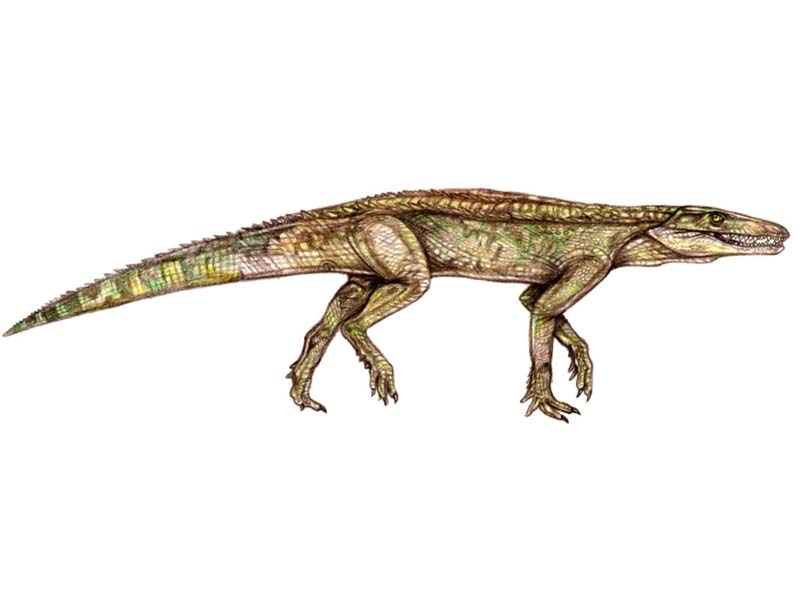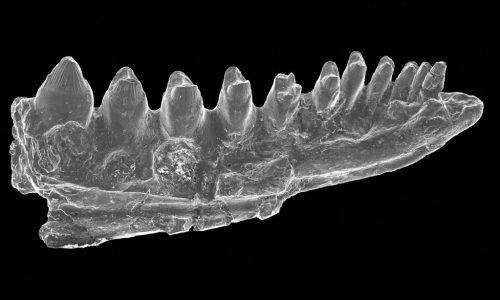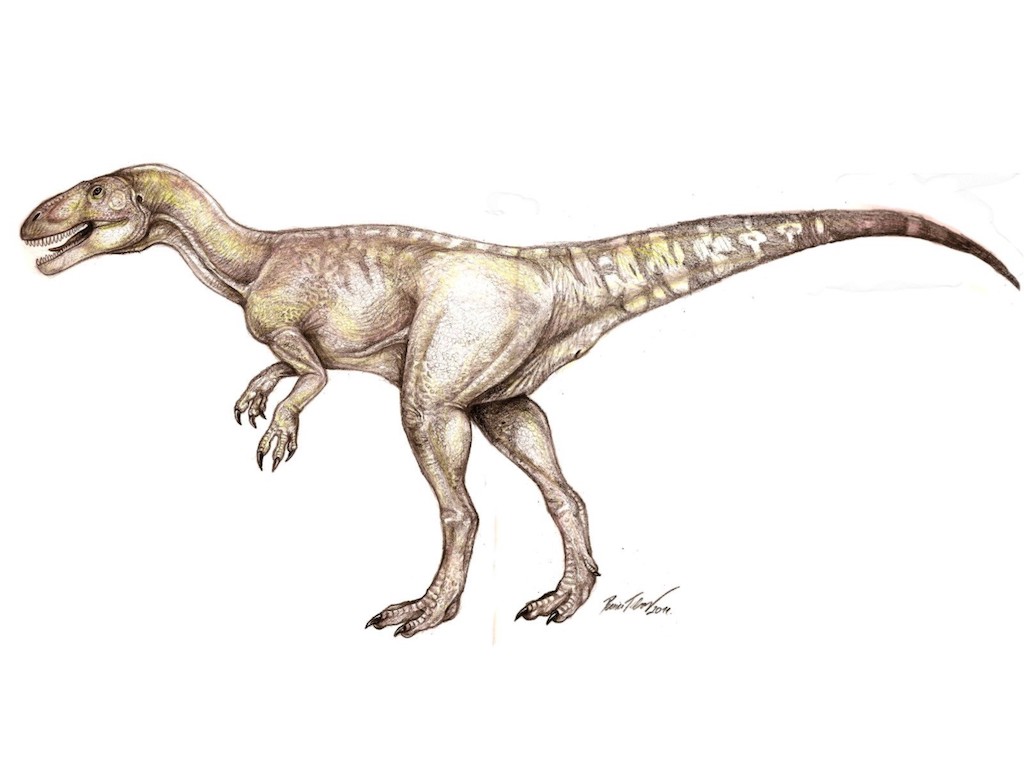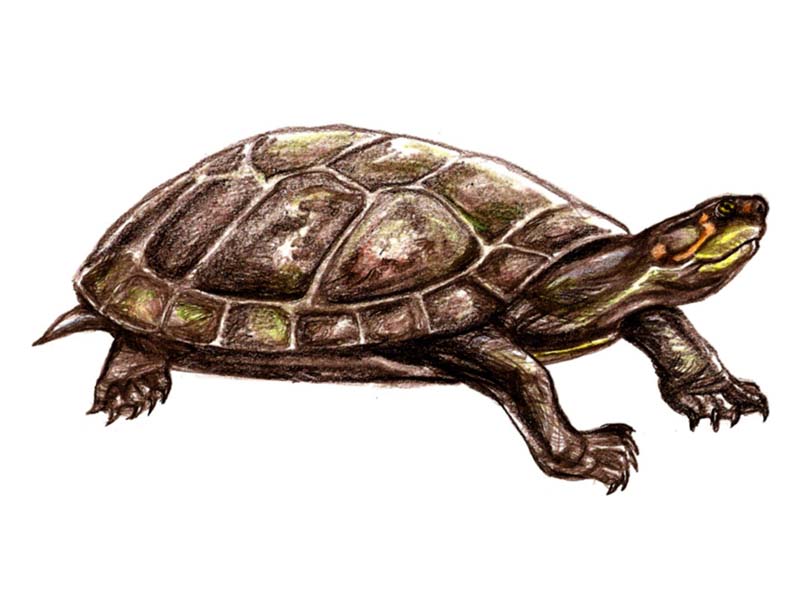
Doratodon
The only fossils unearthed of these small crocodilians are a few skull and lower jaw elements and isolated teeth…

The most common lizard at the Iharkút site is Bicuspidon aff. hatzegiensis, known from dozens of lower and upper jaws. As its name indicates, it is similar to Bicuspidon hatzegiensis from the Haţeg Basin in Transylvania, Romania. However, the genus Bicuspidon itself was first described from the USA, where Bicuspidon numerosus received its name based on its numerous teeth bearing two cusps on the crowns. As opposed to the American species, the Transylvanian Bicuspidon hatzegiensis had an additional large single-cusped tooth at the end of the tooth row behind the bicuspate ones. The Iharkút Bicuspidon apparently differs from both since it has another but much smaller ultimate single-cusped tooth behind the preceding large one. Because the distal end of the dentition of the Transylvanian Bicuspidon is unknown due to fragmentary preservation, it is not impossible that it also had a similar small last tooth. For this reason, it cannot be ascertained whether the same species lived in both places, or that the Iharkút specimens represent a new species. Our research group suggests the latter and this is indicated by the Latin word „aff.”, i.e. „affinis” (meaning „closely related to”) before the species name, acording to the rules of taxonomical nomenclature. However, only new, more complete Transylvanian finds would help to answer this question unequivocally.
The Iharkút Bicuspidon finds represent the second reported occurrence of the genus in Europe. The North American relationship of this genus (and the other Iharkút lizards) supports previous hypotheses which suggest some paleobiogeographic connections between the western Tethyan archipelago and North America in the Late Cretaceous. Bicuspidon might have been a bit longer than a span of an adult human and possibly consumed plants and/or insects.

The only fossils unearthed of these small crocodilians are a few skull and lower jaw elements and isolated teeth…

Gars (Lepisosteidae) are an extant family of actinopterygian fishes, living exclusively on the western hemisphere…

These 4-5 meter long dinosaurs were the top-predators of the Iharkút land during the Late Cretacoeus…

Named after the everlasting Trabant 601 cars what used on the field by our research group so many years…